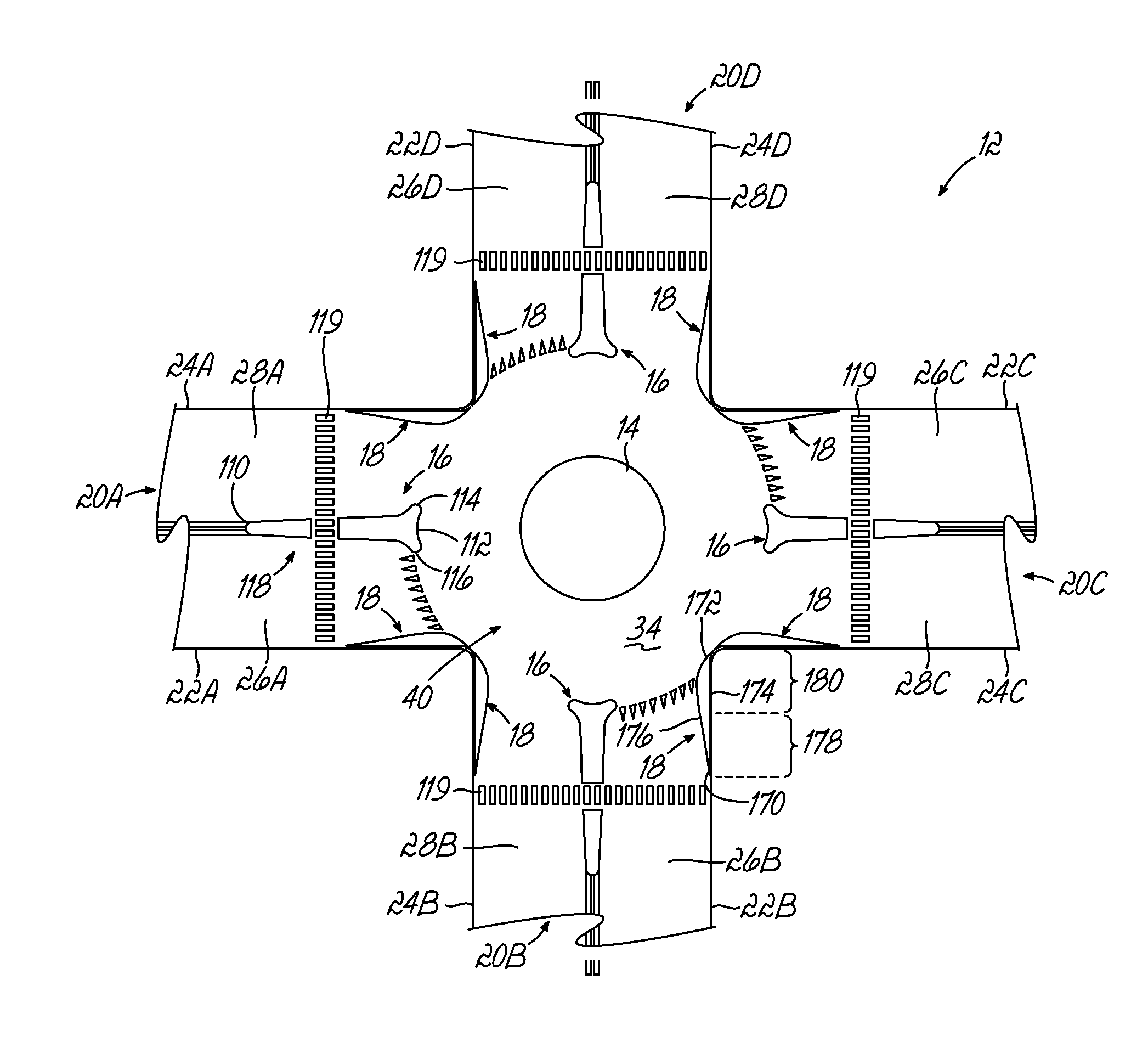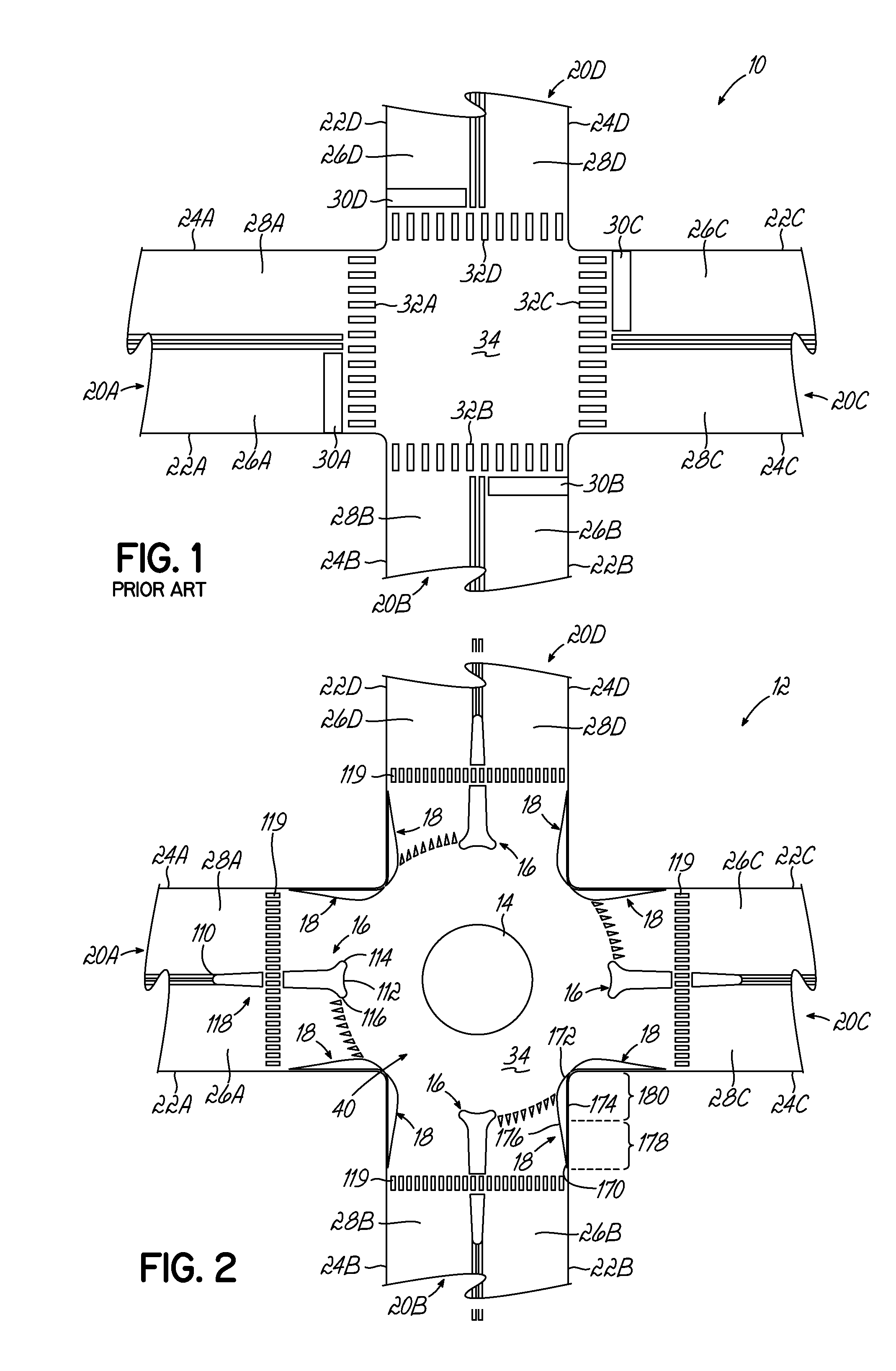Systems for converting an existing traffic intersection into an intersection having a roundabout, and related methods
a technology of traffic intersections and roundabouts, applied in the field of traffic engineering, can solve the problems of occupying a larger amount of roadway space for traffic intersections having roundabouts, requiring more requiring a large amount of land for traffic intersections, etc., and achieves the effect of reducing the amount of resources, and reducing the number of accidents
- Summary
- Abstract
- Description
- Claims
- Application Information
AI Technical Summary
Benefits of technology
Problems solved by technology
Method used
Image
Examples
Embodiment Construction
[0024]With reference to the figures, a system is shown for converting an existing traffic intersection 10 (FIG. 1) into a traffic intersection 12 (FIG. 2) having a roundabout traffic control feature. The system may include a center island 14, several splitter islands 16, and several diverters 18.
[0025]The existing traffic intersection 10 shown in FIG. 1 is generally formed at the junction of four road sections 20 (labeled 20A, 20B, 20C, and 20D, respectively); however, this invention may be used at intersections of any number of road sections. Each road section 20 extends between respective road edges 22, 24 (22A, 24A; 22B, 24B; 22C, 24C; and 22D, 24D). Each road section 20 includes two traffic lanes 26, 28 (26A, 28A; 26B, 28B; 26C, 28C; and 26D, 28D), with each traffic lane 26 leading into the traffic intersection 10, and each traffic lane 28 leading away from the traffic intersection 10.
[0026]Each road section 20 may also include a traffic stop line 30 (30A, 30B, 30C, and 30D) whe...
PUM
 Login to View More
Login to View More Abstract
Description
Claims
Application Information
 Login to View More
Login to View More - R&D
- Intellectual Property
- Life Sciences
- Materials
- Tech Scout
- Unparalleled Data Quality
- Higher Quality Content
- 60% Fewer Hallucinations
Browse by: Latest US Patents, China's latest patents, Technical Efficacy Thesaurus, Application Domain, Technology Topic, Popular Technical Reports.
© 2025 PatSnap. All rights reserved.Legal|Privacy policy|Modern Slavery Act Transparency Statement|Sitemap|About US| Contact US: help@patsnap.com



